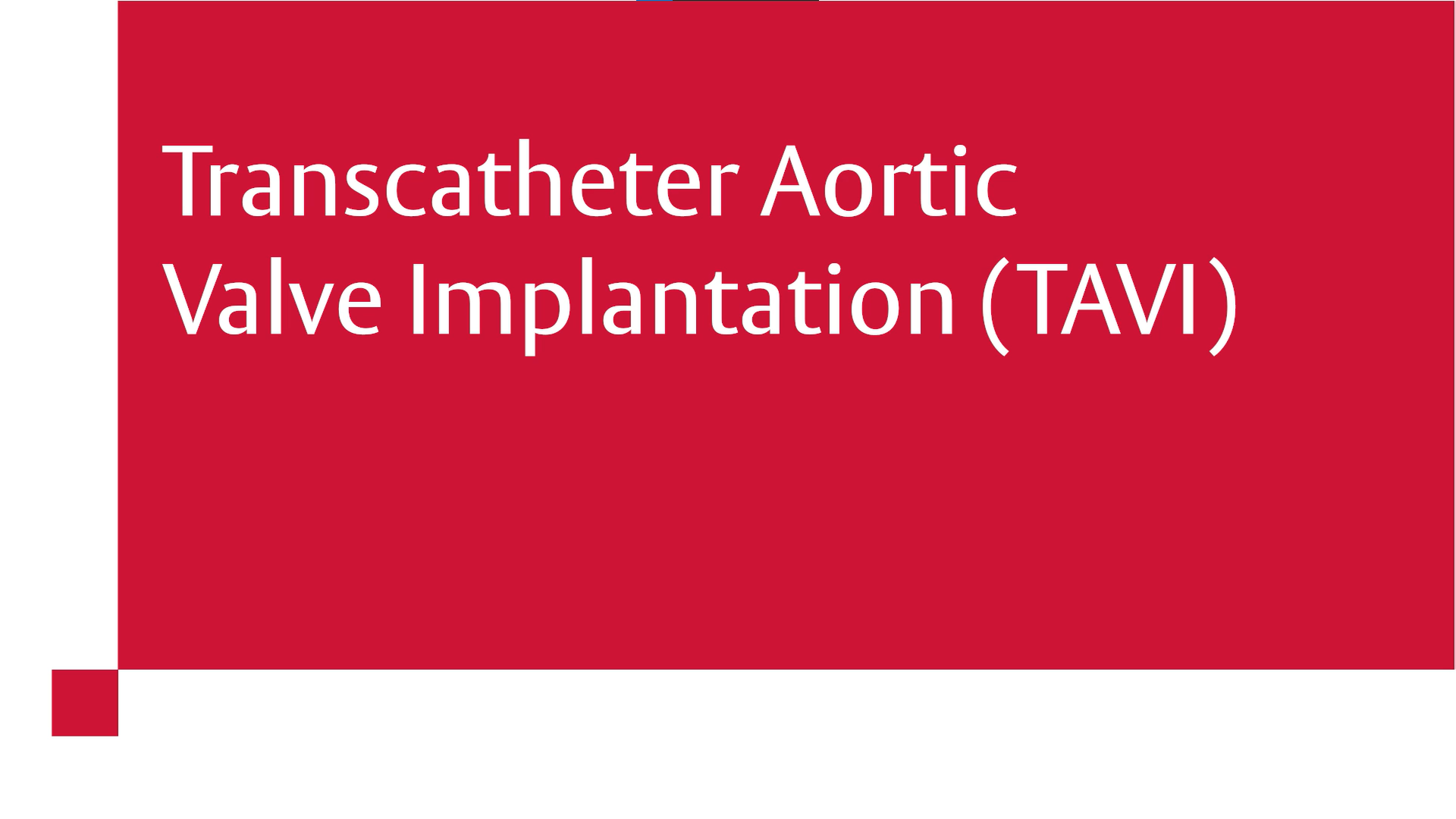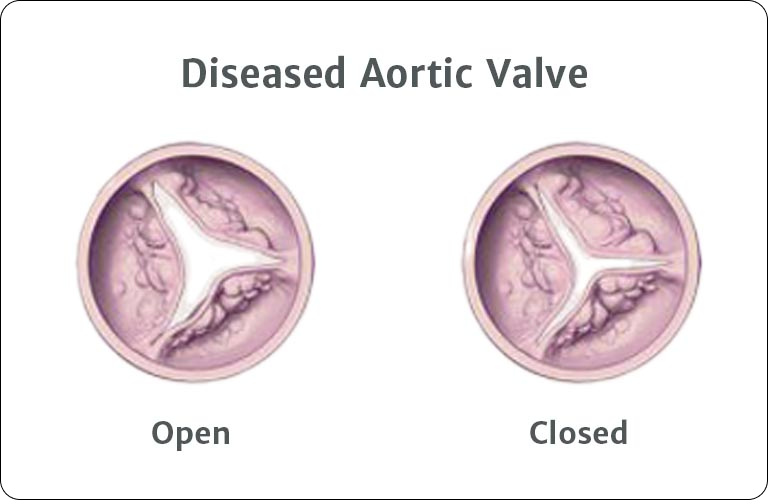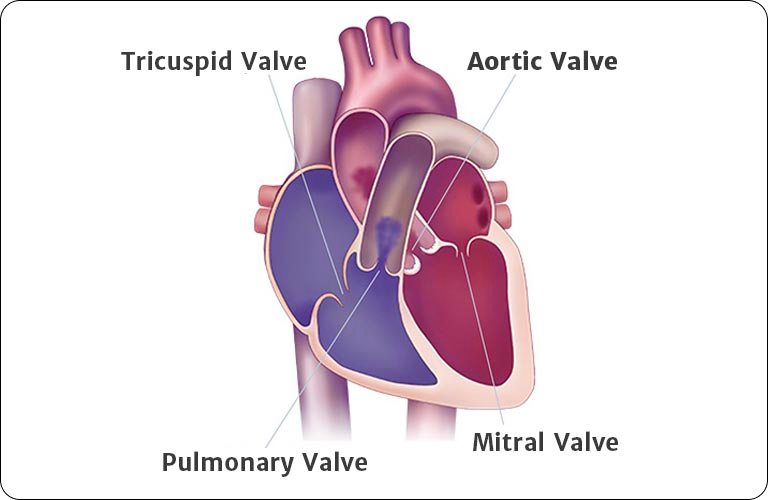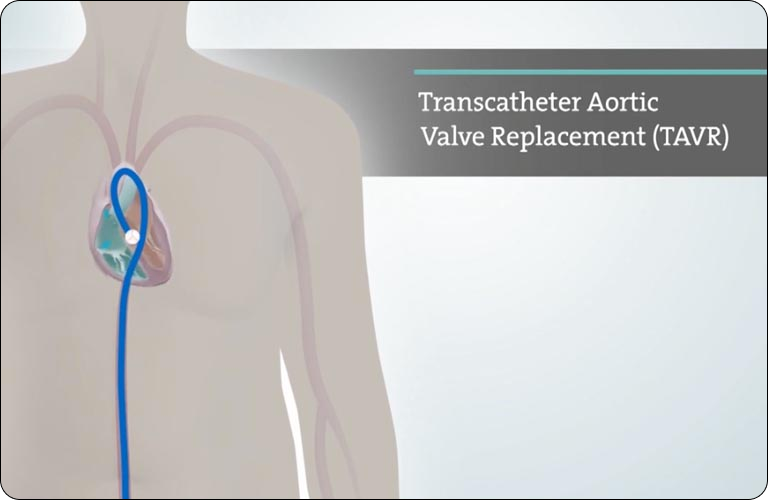During TAVI
With the less invasive transcatheter aortic valve implantantion (TAVI) procedure, you don't have to have your chest opened.1,2 Most patients return home within a few days and recover quicker,3-5 getting them back on their feet sooner.

On the day of your procedure
Your procedure will be performed at the hospital by an interventional cardiologist. You may be fully asleep during your procedure, but in some cases TAVI can be performed under local anaesthesia which can also help get you home sooner.6 The Heart Team will determine what type of anesthesia is best for you.
Your heart will continue to beat during the TAVI procedure. This is quite different than open heart surgery, in which you are placed on a heart and lung blood machine.
How is TAVI performed?
TAVI can be done multiple ways, but the most common approach involves a small incision in the groin. This is called the transfemoral approach. The Heart Team will determine the best place to make an incision based on your individual anatomy.
If you have questions about your TAVI procedure approach, ask your doctor.
TAVI procedure step-by-step
A small incision is made in your groin. This is where your doctor will insert a short, hollow tube called a sheath into your femoral artery.

The new valve is then placed on the delivery system (or tube) with a balloon on the end. The new valve is compressed on the balloon to make it small enough to fit through the sheath.

The delivery system carrying the valve is pushed up to your aortic valve. Once it reaches your diseased valve, the balloon is inflated, expanding the new valve into place. The new valve pushes aside the leaflets of your diseased valve. Your existing valve holds the new valve in place. Once your new valve is in place, the balloon is deflated and removed.

The new valve will open and close as a normal aortic valve should. Your doctor will make sure your new valve is working properly before closing the incision in your groin.


Video
TAVI procedure video
Watch this video to see how the less invasive TAVI procedure is performed.
Play video
How long does the TAVI procedure take?
The average TAVI procedure is much shorter compared to open heart surgery.3
Getting back to your normal live after TAVI
The less invasive1,2 TAVI procedure can mean a faster return to your normal self, and can improve your quality of life.7,8 Talk to you doctor about how long your recovery could take, and find out what you can expect during the recovery process.
As with any medical procedure, there is a possibility of risks and complications with the TAVI procedure. The most serious TAVI complications include death, stroke, serious damage to the arteries, and serious bleeding.


Want more information delivered directly to you?
Get a free information kit by email or mail to learn more about
What you’ll receive in your kit:
- Education on severe aortic stenosis and symptoms checklist once it becomes severe
- Information on TAVI as a treatment option
- Discussion guide for talking with your doctor
References
1. Kleczyński P, et al. KardiolPol. 2014;72(7):612-616.
2. Reynolds MR, et al. J Am Coll Cardiol. 2012;60(6): 548-558.
3. Mack MJ, et al. N EnglJ Med. 2019;380(18):1695–1705 and supplementary material.
4. Thourani VH, et al. Lancet. 2016;387(10034):2218–2225.
5. Leon MB, et al. N Eng J Med 2016;374(17):1609–1620.
6. Herrmann HC, et al. CircCardiovasc Interv. 2021;14:e010310.
7. Baron SJ, et al. J Am Coll Cardiol. 2019;74(23):2833—2842.
8. Barbanti M, et al. EuroIntervention. 2019;15:147-154.
PP--EU-7603 v1.0





 Australia
Australia
 Brazil
Brazil
 Germany
Germany
 Italy
Italy
 Netherlands
Netherlands
 New Zealand
New Zealand
 South Korea
South Korea
 Southeast Asia
Southeast Asia
 United Kingdom
United Kingdom